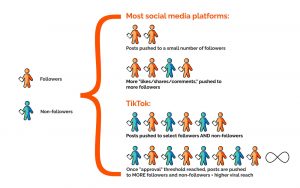Following President Obama’s directive to “modernize and streamline” white collar overtime exemption regulations, the Department of Labor is poised to release changes to the FLSA any day now. Experts are urging HR professionals to prepare by scrutinizing the validity of their job descriptions. The administration has yet to release the details of the draft regulations, but it’s likely to impact both the salary level test and the primary duties test for determining whether a job is classified as exempt or non-exempt. It’s projected that the current exempt salary level of $ 23,660 will increase significantly to as much as $ 52,000. This alone will create a huge increase in the number of employees that could be considered non-exempt. It is likely, as well, that the duties test will mirror the California rules requiring exempt employees to spend more than 50% of their time performing exempt duties. This means that companies will need to categorize primary responsibilities by exemption status as well as track percent of time for each task. Companies will be forced to use these enhanced job descriptions as a measure for ensuring that both the jobs themselves are compliant and that the employee is complying with the job description. Failing to do so could put companies at risk of being out compliance, and that could be costly.
So, what steps should one take in order to prepare their job descriptions for these changes? First of all, dust off those job descriptions and enhance them as described above. Get feedback from managers to confirm that the essential functions listed in the job description reflect the actual duties of job. Jobs change over time so it is important to audit them periodically and gather feedback from managers. Companies with a minimal quantity of job descriptions may find a manual, face-to-face approach appropriate while larger companies will choose to employ an automated system to make the process more manageable. These systems help HR keep tabs on the job description review process, collaborate with managers and subject matter experts, and store current and historical versions of each job.
 “Whether you choose a manual process or to go with a system like ours,” says Mitch Stephens, Founder and Chief Software Architect of HRTMS Jobs, the first stand-alone job description management tool, “it’s critical to communicate with those who know the job. HR understands the intricacies of job description construction, but managers and employees are the ones who know what the job actually entails. Without the help of those who have a true understanding of the job, HR has no way of knowing if the job description they have on file and the classification derived from that description is accurate.”
“Whether you choose a manual process or to go with a system like ours,” says Mitch Stephens, Founder and Chief Software Architect of HRTMS Jobs, the first stand-alone job description management tool, “it’s critical to communicate with those who know the job. HR understands the intricacies of job description construction, but managers and employees are the ones who know what the job actually entails. Without the help of those who have a true understanding of the job, HR has no way of knowing if the job description they have on file and the classification derived from that description is accurate.”
As the accuracy of the job description is verified, HR professionals will also have to look at more than just the title of a job to arrive at an appropriate classification. They will need to evaluate the exemption status of each task. Let’s look at the job of Assistant Manager for example. Previously, this position was considered exempt because of its “management” status; however, if the employee spends only a minimal amount of time performing management duties and the majority of time is spent performing more non-exempt tasks, that employee may soon be entitled to overtime pay, since the proposed changes may require employees to spend at least 50% of their time performing management duties to remain exempt. If your company is not tracking percentage of time for essential functions, you may soon be required to do so in order to substantiate the exempt status given for each job.
Many legal professionals are also calling for companies to require employees to review and sign off on their job descriptions. Getting the job description right is only the first part. Making sure that employees comply with the job description downstream is just as important. In fact, it’s likely that the DOL will focus more on what an employee actually does than how the job is described in measuring compliance.
Finally, because jobs change over time, it’s critical to arrive at a strategy to maintain your job description portfolio. Who will be tasked with making sure job descriptions are accurate and up-to-date? How will revisions be requested, made and tracked? How often will internal audits be done and employee acknowledgements be required? Will you use a paper and email method or an automated job description management system?
Still, we must wait to hear from the Administration on what will be included in the proposed changes. But it is clear that if these changes do come to fruition, the job description will be an even more critical piece of the FLSA compliance puzzle.
References:
http://www.worldatwork.org/waw/adimLink?id=78805
https://en.wikipedia.org/wiki/Job_description_management
http://www.politico.com/story/2015/06/barack-obama-overtime-salary-levels-white-house-118688.html
https://www.littler.com/president-obama-directs-department-labor-revise-federal-overtime-regulations
(178)








